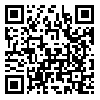Volume 12, Issue 4 (12-2022)
J Health Saf Work 2022, 12(4): 724-741 |
Back to browse issues page
Download citation:
BibTeX | RIS | EndNote | Medlars | ProCite | Reference Manager | RefWorks
Send citation to:



BibTeX | RIS | EndNote | Medlars | ProCite | Reference Manager | RefWorks
Send citation to:
Mohammadfam I, Soltanian A R, Kalatpour O. Developing a Method for Identifying Emergencies in Process Industries. J Health Saf Work 2022; 12 (4) :724-741
URL: http://jhsw.tums.ac.ir/article-1-6768-en.html
URL: http://jhsw.tums.ac.ir/article-1-6768-en.html
1- Center of Excellence for Occupational Health, Occupational Health and Safety Research Center, School of Public Health, Hamadan University of Medical Sciences, Hamadan, Iran
2- Department of Biostatistics, Modeling of Noncommunicable Diseases Research Center, Hamadan University of Medical Sciences, Hamadan, Iran
3- Center of Excellence for Occupational Health, Occupational Health and Safety Research Center, School of Public Health, Hamadan University of Medical Sciences, Hamadan, Iran ,omidohs@gmail.com
2- Department of Biostatistics, Modeling of Noncommunicable Diseases Research Center, Hamadan University of Medical Sciences, Hamadan, Iran
3- Center of Excellence for Occupational Health, Occupational Health and Safety Research Center, School of Public Health, Hamadan University of Medical Sciences, Hamadan, Iran ,
Abstract: (1008 Views)
Introduction: One of the essential and critical elements for efficient and effective management of emergencies is anticipation and identification of possible types of emergencies. As such, a framework for anticipating and identifying emergencies was designed and tested in two process industries in the form of a case study.
Material and Methods: At first, methods for identifying emergency preparedness and their evaluation criteria were extracted and prioritized with a two-stage fuzzy approach. A fuzzy inference system was then used to calculate the weight of the experts’ opinions. To prioritize the methods, the inputs related to the second fuzzy system were estimated and the final score of the methods was calculated by entering the mentioned variables into the fuzzy system.
Results: The findings pertaining to the final ranking of the methods indicated that, “list of catastrophic accidents and near-misses of the organization’s lifespan”, “MIMAH” and “risk assessment and management” had the highest scores among the identified methods with the final scores of 0.754, 0.750 and 0.725, respectively.
Conclusion: Using this approach will help in more accurate identification of potential emergencies. Consequently, this will lead to the prevention of imposed damages caused by the situation as well as making the wrong investments by eliminating low-priority emergencies.
Material and Methods: At first, methods for identifying emergency preparedness and their evaluation criteria were extracted and prioritized with a two-stage fuzzy approach. A fuzzy inference system was then used to calculate the weight of the experts’ opinions. To prioritize the methods, the inputs related to the second fuzzy system were estimated and the final score of the methods was calculated by entering the mentioned variables into the fuzzy system.
Results: The findings pertaining to the final ranking of the methods indicated that, “list of catastrophic accidents and near-misses of the organization’s lifespan”, “MIMAH” and “risk assessment and management” had the highest scores among the identified methods with the final scores of 0.754, 0.750 and 0.725, respectively.
Conclusion: Using this approach will help in more accurate identification of potential emergencies. Consequently, this will lead to the prevention of imposed damages caused by the situation as well as making the wrong investments by eliminating low-priority emergencies.
Type of Study: Research |
Received: 2022/12/26 | Accepted: 2022/12/31 | Published: 2022/12/31
Received: 2022/12/26 | Accepted: 2022/12/31 | Published: 2022/12/31
Send email to the article author
| Rights and permissions | |
 |
This work is licensed under a Creative Commons Attribution-NonCommercial 4.0 International License. |







